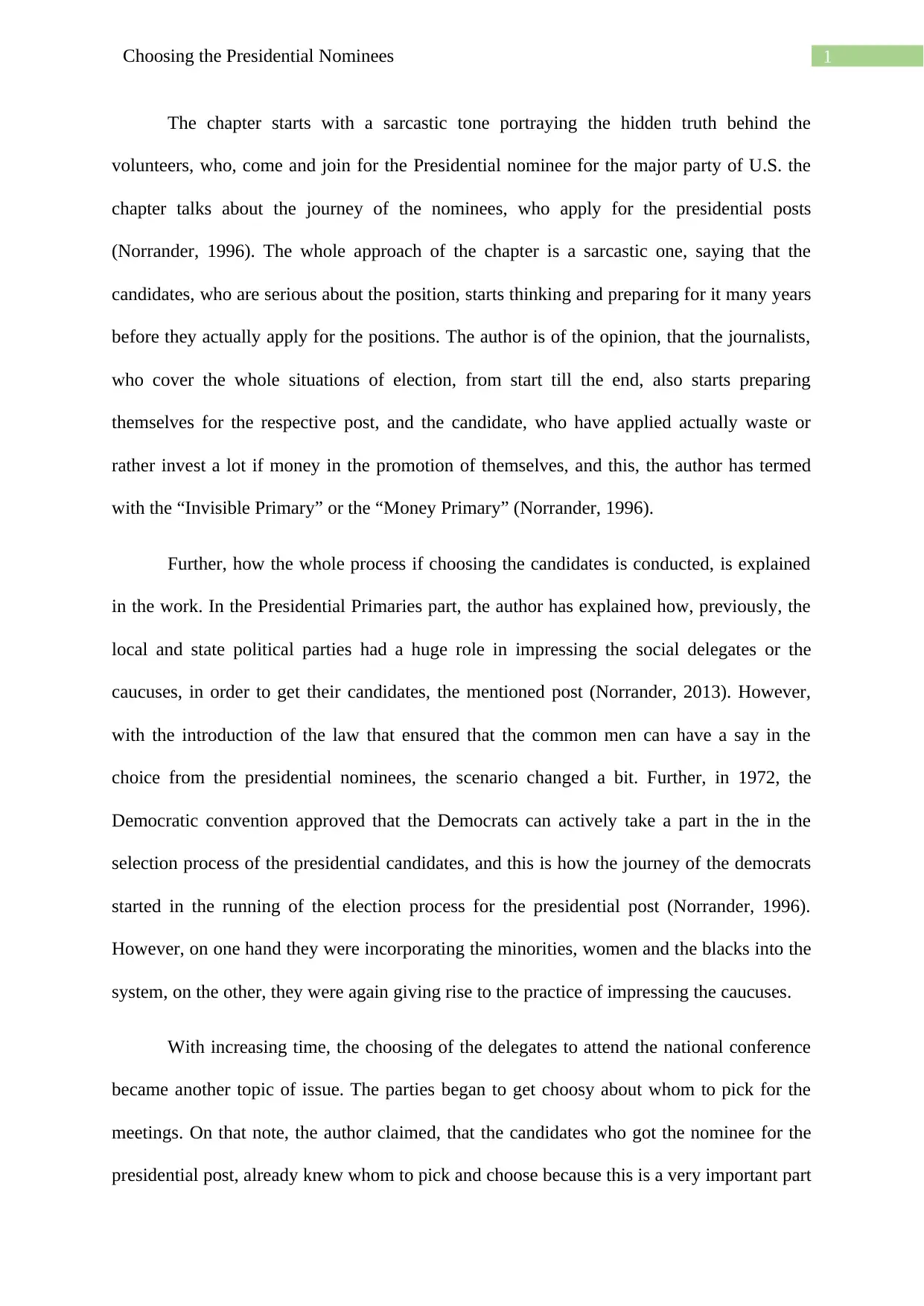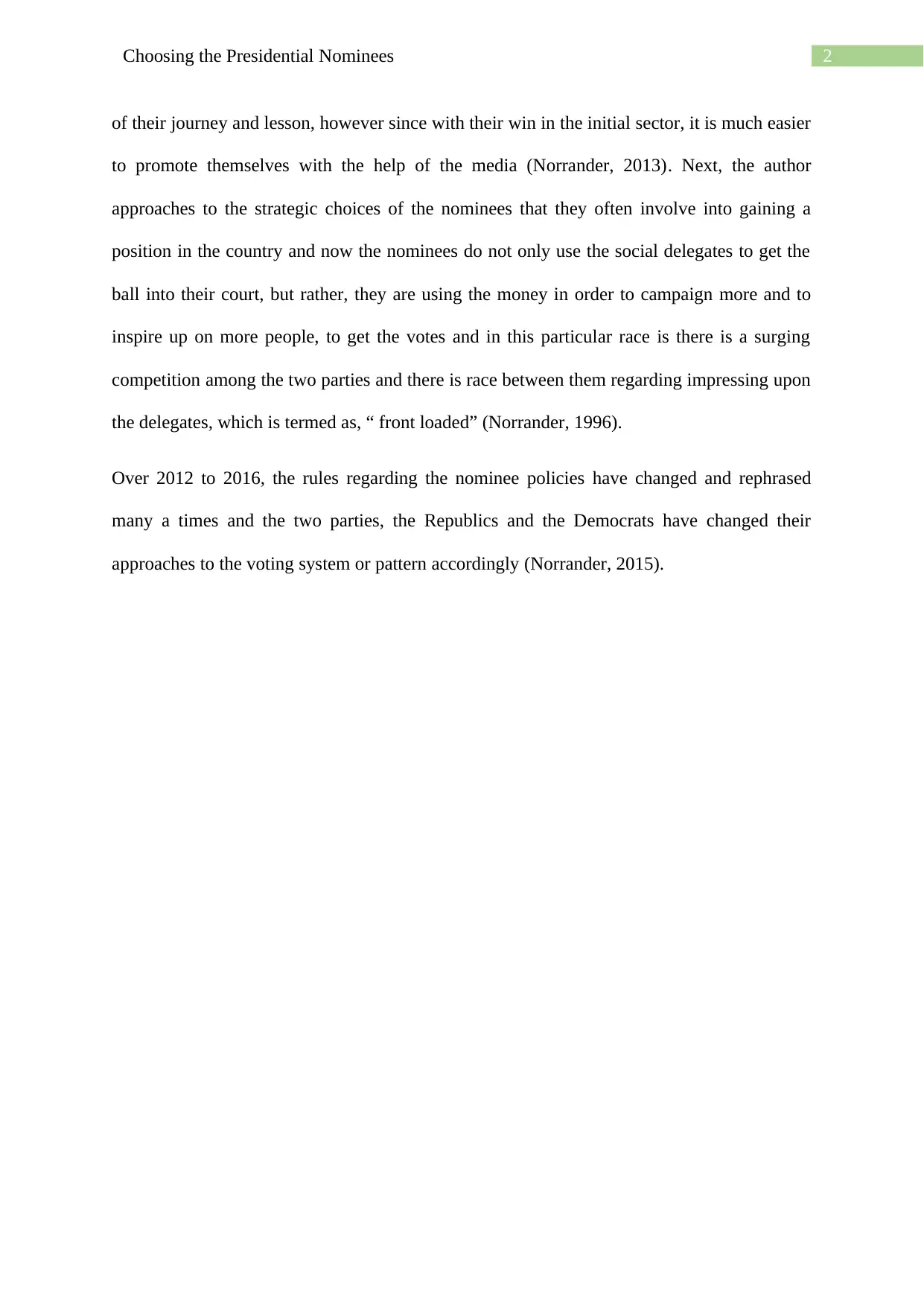The Process of Choosing Presidential Nominees: A Political Report
VerifiedAdded on 2022/12/20
|4
|734
|69
Report
AI Summary
This report analyzes the process of selecting presidential nominees in the United States, highlighting the evolution of the system from the early influence of local and state political parties to the impact of the common voter, and the role of caucuses. It discusses the rise of the "invisible primary" or "money primary," where candidates and journalists begin preparing years in advance, and the strategic choices nominees make to gain a position. The report details the shifts in nomination policies between 2012 and 2016, and the changing approaches of both Republican and Democratic parties to the voting system. The author uses a sarcastic tone to underscore the competitive nature of the process and the significant financial investment required for candidates to promote themselves and secure votes, emphasizing the importance of delegate selection and media influence in the race to the presidency.
1 out of 4





![[object Object]](/_next/static/media/star-bottom.7253800d.svg)